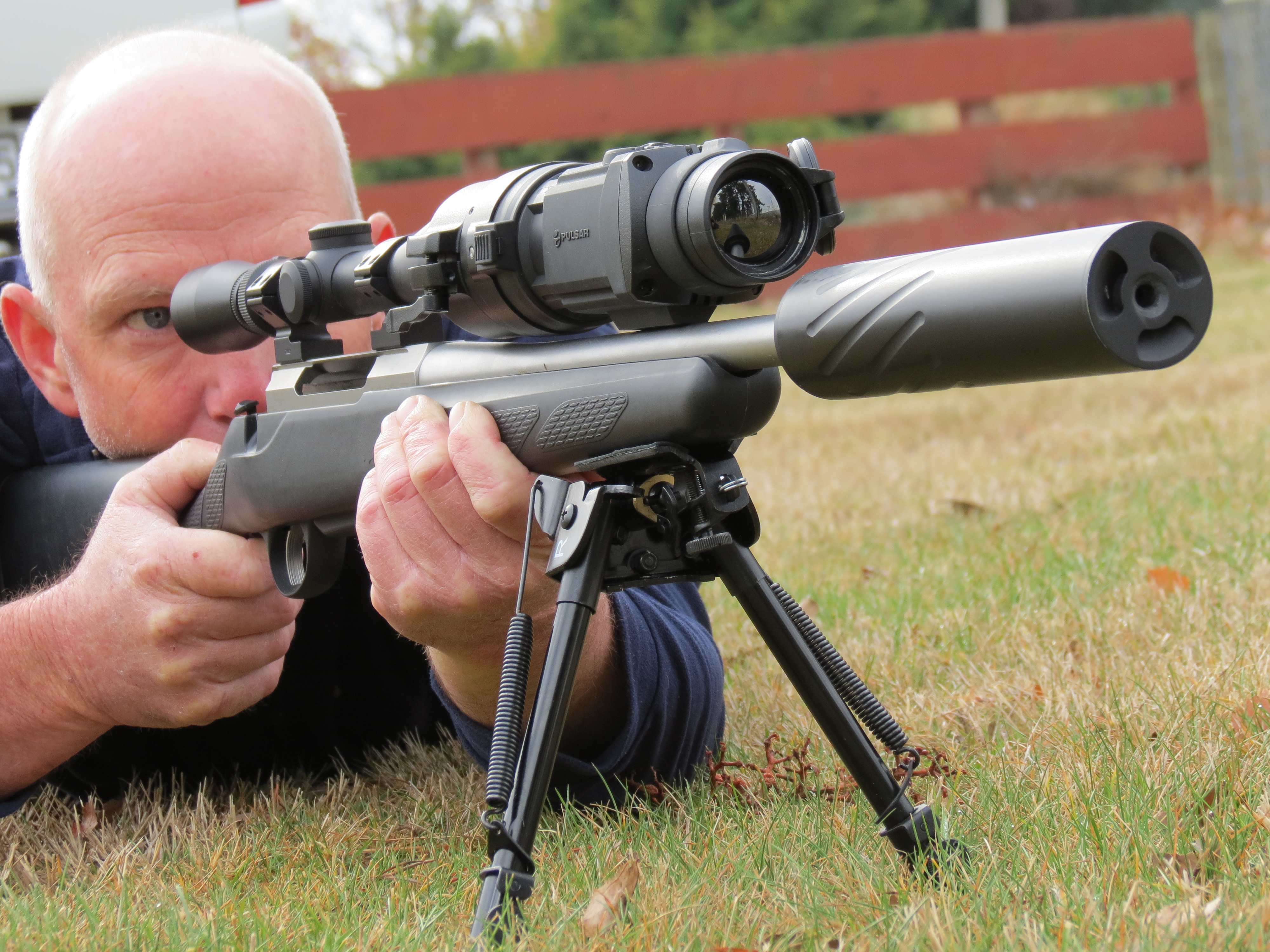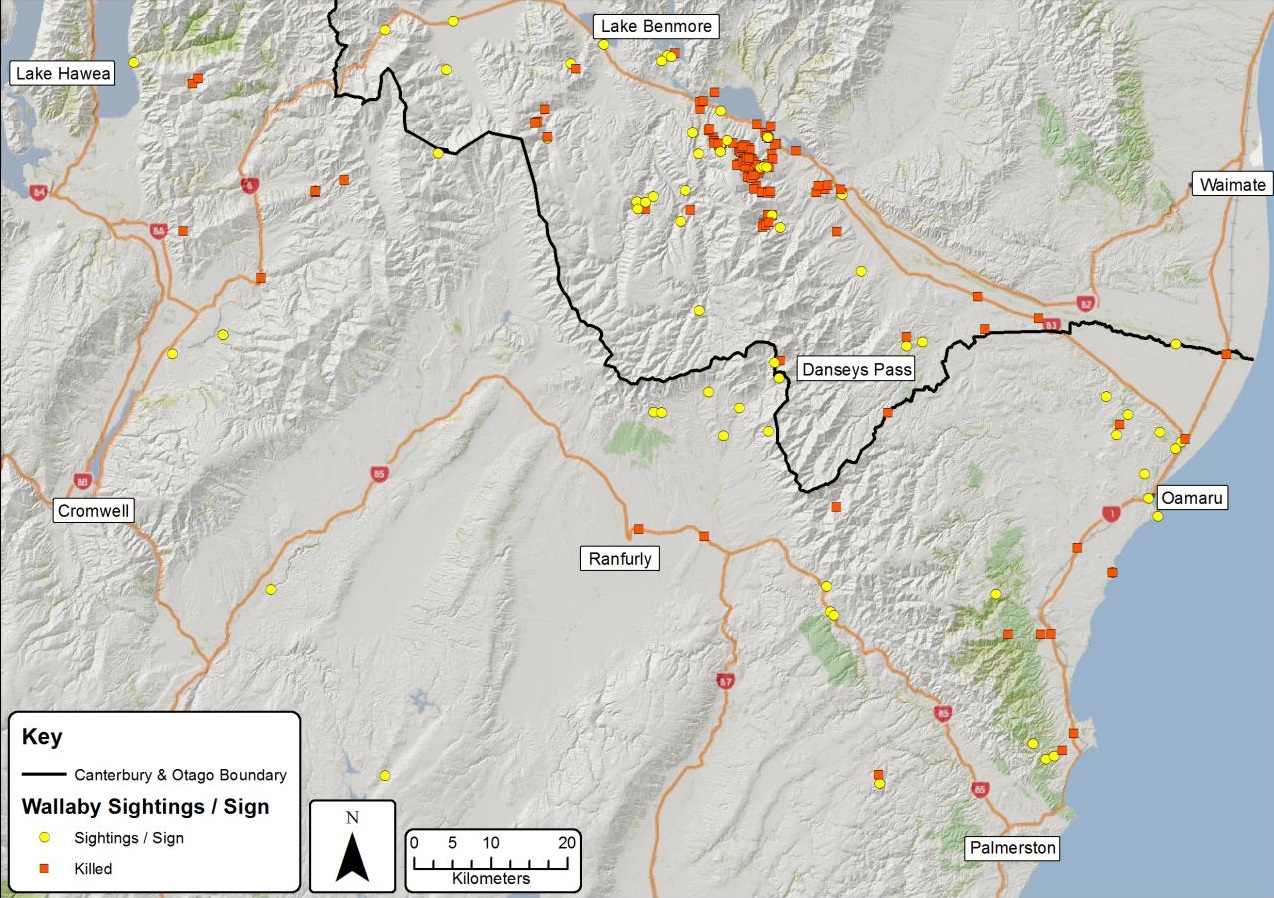
Communities are being asked to report any sightings of live or dead wallabies, their tracks or droppings, which will help determine the rate of spread.

"If wallabies were allowed to establish here, we are going to have a lot of trouble in the future," he said.
"If we don’t deal with them, they will have a pretty significant impact.
"The damage to the Otago environment could be devastating."
Environment Canterbury biosecurity team leader Brent Glentworth said a 900,000ha containment area had been established in Canterbury but animals were moving further afield.
"We had 120 sightings [in Otago] in 2016 and have had 30 this year so far outside the containment area," Mr Glentworth said.

A Ministry for Primary Industries report released in 2016 predicted the economic benefit to the South Island by controlling wallabies would be more than $23.5 million annually, but if they were left alone, the economic cost would be about $67 million within 10 years.
They are also a threat to orchards, forestry and native bush, and compete with stock for pasture. Three wallabies equal one stock unit in terms of grazing pressure.
They are well established in Canterbury but sightings and bodies have been found in Marlborough, near Hawea, Wanaka, Ranfurly, Oamaru, Cromwell, Galloway and one body was found near Lawrence. Mr Allan said Central Otago was ideal country for wallabies as there was plenty of cover and it was dry.
They like sheep and beef country, as well as lifestyle blocks, and can go as high as 2000m.
They come out at night to graze on green feed and can travel up to 6km at night before returning home to take shelter during the day.
"They are resilient, adaptable and thrive in the Otago environment.
"They can swim rivers and streams so those will not be barriers."
The only places they do not go is mountain tops, intensive dairying areas and towns.
Mr Allan urged farmers to keep an eye out for wallaby droppings or tracks.
He said poisoning was effective as were contractor and dog teams and using thermal imaging on rifles.
The ORC and ECan were recently granted $300,000 from the Sustainable Farming Fund over three years to research thermal imaging technology and determine how effective it would be. The project launches in July. A recent trial proved it was effective in finding wallabies from aircraft.
However, while a shooter from an aircraft could not see the animal under cover, research was needed to develop a system to combine thermal imaging with a laser to pinpoint where a wallaby was hiding to increase the shooter’s accuracy, he said.
Contact Kevin Allan of the ORC on 027 322-0330.
yvonne.o'hara@alliedpress.co.nz
WALLABIES
• Wallabies were introduced to South Canterbury in 1874.They started becoming a pest in the 1940s.
• They are sexually mature at two years.
• Gestation is only 26 days and a joey will attach itself to a teat for about 50 days.
• A female can use embryonic diapause (the ability to delay development of an embryo until conditions are more favourable or if she is still nursing a joey).
• Young use a pouch for about 270 days before becoming fully weaned.
• They can swim, are adaptable, nocturnal and solitary.
Comments
Are You Game?
A Guide to Visitors
Now, we come to our wild places. Here, may be found enigmatic beasts with the ability to hide in plain sight. In town, they run for busses and may be seen looking cryptic over crosswords. They are very aggressive, and threaten to 'jump on' peoples heads, in the style of Australian marsupials.












